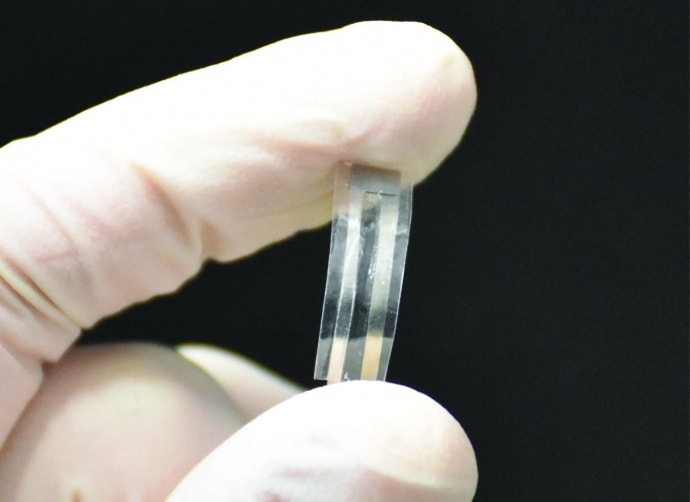Dedicated sensors are a cornerstone of industrial processes, helping operators understand what is happening in the equipment and alerting to any possible problems before they happen. In medicine, sensors are also widely used, but mainly outside the body; implantable sensors have been developed but have the important drawback of needing to be removed, which increases recovery times and poses risks of infection. Engineers from the University of Connecticut have now developed an implantable sensor made from materials already approved by the Food and Drug Administration that can measure even very small changes in pressure inside organs.

"Medical sensors are often implanted directly into soft tissues and organs," noted biomedical engineer Thanh Duc Nguyen, senior author on a paper describing the research in the online edition of Proceedings of the National Academy of Sciences. "Taking them out can cause additional damage. We knew that if we could develop a sensor that didn't require surgery to take it out, that would be really significant."
The sensor works using the familiar piezoelectric principle, where applying force to a material causes a charge to be generated proportional to the force, which can then be detected. However, the team used a material that under normal conditions does not have piezoelectric properties: poly (L-lactide) (PLLA), a medically-safe biodegradable polymer. A graduate student in Nguyen’s laboratory, Eli Curry, devised a method for changing PLLA’s properties by carefully heating, stretching and cutting the material in a particular way described in the PNAS paper. This changes the polymer’s internal molecular structure in such a way that piezoelectric properties result.
The team then constructed a pressure sensor by sandwiching two layers of PLLA film between tiny molybdenum electrodes and then encapsulating this assembly inside layers of polylactic acid (PLA), a polymer commonly used in bone screws and tissue scaffolds. The device is sensitive enough to detect even very small changes in pressure, the team claimed. It sensitivity can be adjusted by, for example, changing the number of PLLA layers.
The team has carried out a number of tests implanting the sensor into mice, and obtained readings comparable to, and as reliable as those from existing commercial devices. The sensor can measure physiological pressures in the brain, behind the eye and in the abdomen, the researchers said, raising the possibility that the sensor could be used to monitor patients with conditions such as glaucoma, heart disease and bladder cancer. "We are very excited because this is the first time these biocompatible materials have been used in this way," Nguyen said.
The sensor is not yet fully biodegradable because of its molybdenum electrodes; molybdenum is tolerated inside the body and is currently used in cardiovascular stents and bone implants. The team hopes to develop a fully biodegradable system, but until then Nguyen stated that the current form can still be useful.
"There are many applications for this sensor," he said. "Let's say the sensor is implanted in the brain. We can use biodegradable wires and put the accompanying non-degradable electronics far away from the delicate brain tissue, such as under the skin behind the ear, similar to a cochlear implant. Then it would just require a minor treatment to remove the electronics without worrying about the sensor being in direct contact with soft brain tissue."




Red Bull makes hydrogen fuel cell play with AVL
Formula 1 is an anachronistic anomaly where its only cutting edge is in engine development. The rules prohibit any real innovation and there would be...